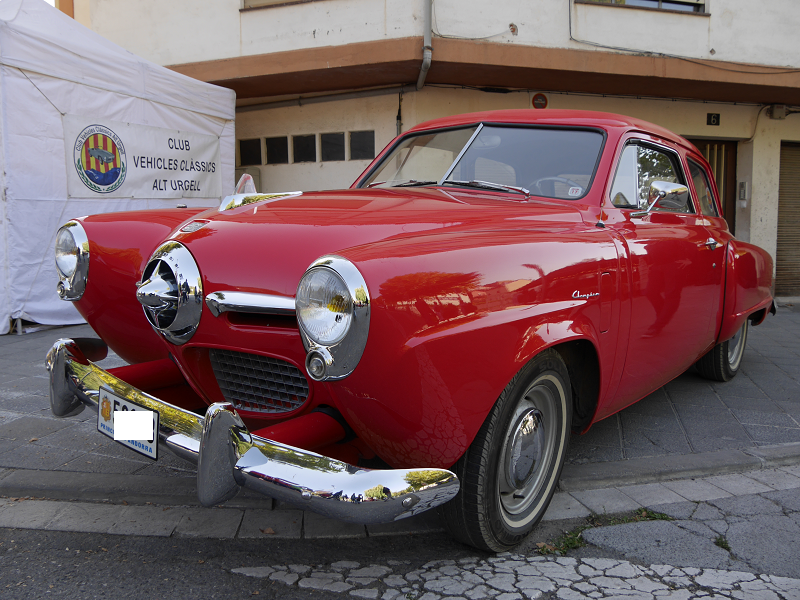1950 Studebaker Champion. Red coupe in the Pyrenees mountains
The Studebaker Champion is an automobile which was produced by the Studebaker Corporation of South Bend, Indiana, from the beginning of the 1939 model year until 1958. It was a full-size car in its first three generations and a mid-size car in its fourth and fifth generation models, serving as the junior model to the Commander.
Third generation
In 1947, Studebaker completely redesigned the Champion and the Commander, making them the first new cars after World War II. The styling included a new rear window, flat front fenders in the ponton style which had just gone mainstream, as well as convenience features like backlight illumination for gauges and automatic courtesy lights. The Champion made up 65.08% of the total sales for the automaker in 1947.
The 169.9 cu in (2.8 L) I6 engine produced 80 hp (60 kW; 81 PS) in 1947. In 1950, output was increased to 85 hp (63 kW; 86 PS). Also, new styling (new grille, sheet metal, and rear end) was introduced, as well as an automatic transmission by Borg-Warner.
One of the new styling features on the cars was the wraparound, “greenhouse” rear window that was on 2-door, 5-passenger coupes from 1947 to 1951, at first just an option, in 1950 it was given its own trim line, the Starlight coupe. The “spinner” grille was introduced in 1950, similar to that of a 1949 Ford, but was dropped again for the 1952 model year.
A single four-door, wood-bodied station wagon prototype was also designed. It appeared at several car shows, but was never put into production. The car was then driven for several years by employees to run company errands. Around 1955, the body was removed from the chassis and was sent to the secret graveyard in the wooded infield of the high-speed oval at the company’s proving ground west of South Bend. In the early 1970s, members of the Studebaker Drivers Club discovered the body of the wagon prototype. Around 1980, members of the club were allowed to remove the wagon prototype for preservation. After a multi-year restoration, the car was put on display at the Studebaker National Museum.














